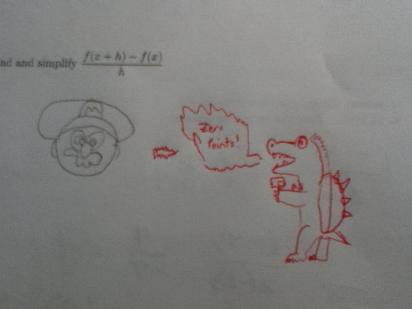Today we finished the Calc 2 section introducing series. At the beginning of class, we had a lot of confused looks, and questions during class mixed up the (very easy to confuse) sequence with the series. I wanted to find out where we stood in the class, so I gave them a quiz which asked simply,
Using intuition alone, do you think
converges or diverges? Why?
When I went over the responses, I started a little concerned. But in the end, I had the following results:
- 12 students had statement something like tail going to 0
- 3 students though it looked something like a geometric series
- 5 used the Divergence Test but had an arithmetic mistake to conclude it diverged.
- 1 had completely wrong math (split the addition in the denominator, mistaking definition of convergence)
- 3 compared it to the harmonic series (so diverged)
- 1 liked “convergence” better as a word.
We decided the top three categories, 20 students in all, are in a good way. I grant that doesn’t guarantee convergence, but intuitively, it’s a good start! Similarly I was happy when they noticed
is a small number, like a convergent geometric series. And arithmetic errors are perfectly normal when you first see a topic!
Of the three students who compared it to the harmonic series, two of them wrote to the effect “Well, I think it should converge, but I thought the harmonic series should converge, too” so I had in a sense led them astray by that neat counter-example to the divergence test.
The one person with the snarky response liking “convergence” better as a word is (no surprise to the reader, I’m sure), one of my best students.
By this metric, 20/25 are on the right track. That’s not bad for a first look at series. Tomorrow we learn convergence testing to put their intuition to work!
